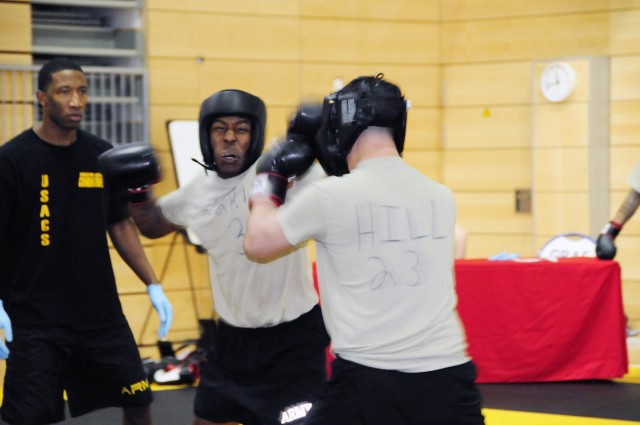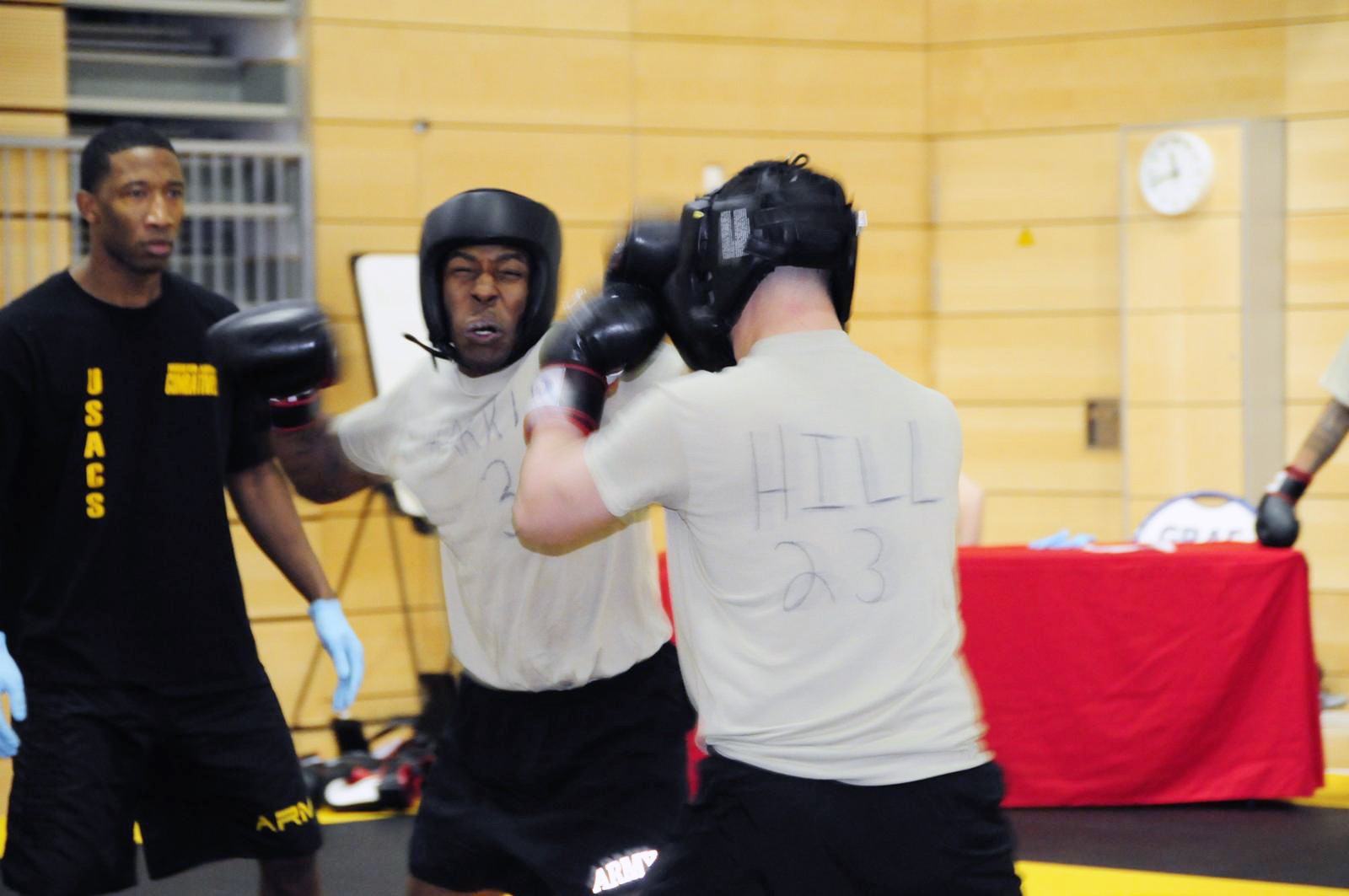Float like a butterfly, sting like a bee.
Students of the U.S. Army Level III Combatives Course hoped to do just that as they punched, kicked and fought their way to certification - and the sting was more than an expression, it was a 1,000 watt jolt of electricity from a taser.
From boxing to stick fighting, the 30 students from installations throughout Germany and Italy overcame fear and physical exhaustion to gain the upper hand and close in on the enemy, the defining characteristic of a warrior.
Modern Army Combatives, the military's unique martial-art which blends Brazilian jujitsu, wrestling, judo and boxing into a systematic form of hand-to-hand combat, according to both instructors and students, gives Soldiers the confidence to live the Warrior Ethos and survive in combat.
Instructors from the U.S. Army Combatives School in Ft. Benning, Ga., traveled to Grafenwoehr to teach the Level III course, a first in Europe, which began March 2.
"Hand-to-hand combat has always been in the United States Army," said Instructor Spc. Jorge Giovannina. "This is only an evolution of it - we're fighting a different war. Our program is based on actual scenarios, battles and cases that have happened downrange."
Giovannina explained that the course is effective because it prepares the Soldiers for what they will encounter when they deploy.
"We don't look at it as if it is going to happen. It has happened - how can we train it," he said.
The four-week, 160-hour course, focused on the skills needed to overcome the enemy in close quarters battle, a situation many of the students, said Instructor Sgt. First Class Tohonn Nicholson, USACS, will face.
Nicholson said he used his combatives skills on more than one occasion in combat.
"Sometimes in Iraq, the rooms are about the size of a closet. If you go in there with a gun, you can't shoot anyone. Soldiers are going to have to fight the distance between themselves and the enemy," he said.
"I've used it numerous times when trying to detain someone. An enemy does not want to be taken into custody, so there are times you're going to have to fight back."
Although the training often leaves students bruised and exhausted, said Grafenwoehr's Sgt. First Class Curtis Mosley, 574th Quartermaster Supply Company rear detachment first sergeant and Level III student, it is an essential part of preparing to fight.
"You ask any first sergeant, 'who's your PT stud; who's your Hawkeye for weapons,' they can tell you that. Ask who your best fighter is, they can't tell you that.
"These are all important skills for downrange. ... Combatives is one of the Warrior Tasks and Battle Drills. It is essential we learn it," he said. "A lot of people don't like it because of the physical part of it, but it is definitely something that everybody needs."
The physical aspect of the program, the injuries, cuts and bruises that make medical personnel a requirement during bouts (when students fight each other to polish their skills) is often no more serious than injuries occurred during regular exercise and sports, said Staff Sgt. Kevin Rice, a Vicenza-based instructor who worked with the USACS instructors to train the students.
"(Recovery time) is longer for running when somebody injures their ankle on a run. With the downtime, it actually turns out that running is a higher risk than conducting combatives training," he said.
Instructor Sgt. Stephen Wyatt, USACS, agreed. "We use every precaution we can ... it is the safest we can make it."
Regardless of the risk, Nicholson said, the training saves lives.
"With the enemy ... you can't just go out there and kill - you can't just go out and shoot a person. You will have to bring that person back, and they will have to be subdued.
"At the same time, if (a Soldier's) weapon fails, he's going to have to fight with the enemy for his life - and that's what he's fighting for, he's fighting for his life.
"Combatives is going to give him that edge to fight until (his buddy) can come in and help him. Even if he doesn't win the fight, he can fight until someone comes to assist him," Nicholson added.
The USACS asks students to remember that, "The winner of the hand-to-hand fight in combat will be the one whose buddy shows up with a gun."
Combatives, according to the school's Web site, must be kept in context - knowing that the U.S. is not going to win the next war because the Soldiers are better fighters, but that the program gives Soldiers the mental confidence and skills needed to live the Warrior Ethos.
The course, which was sponsored by the Joint Multinational Training Command, will conclude Friday.


Social Sharing